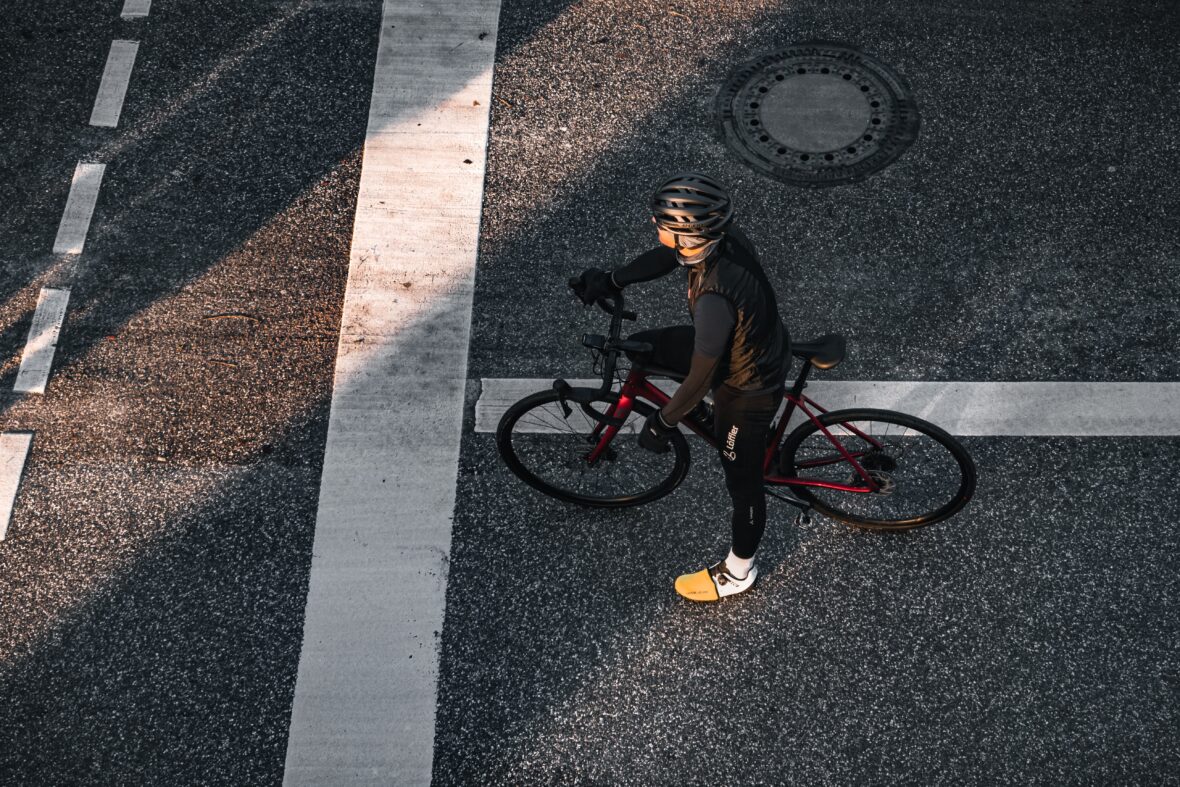Here are the must-follow rules you should learn.
1. Assume car doors will open
Getting doored is a shockingly common occurrence. Sadly, the only way to truly prevent this from happening is to keep a good distance between yourself and parked cars. And watch for movements inside those parked cars that suggest someone inside is about to open a door without looking.
2. Don’t kerb crawl
More important still, staying close to the kerb gives you little room for error meaning a pothole or similar road defect could lead to a spill.
3. If you can’t see their mirrors…
…then they can’t see you. Simple as that.
4. Don’t box yourself in or tailgate vehicles
Try not to ride into a situation where you don’t have a clear exit. A good example of this is when you are approaching a red light, riding between rows of stationary or slow-moving traffic. Don’t get trapped between vehicles as many drivers won’t see you if you’re sitting right next to them when the lights turn green. Similarly, the stopping distance of other road users will usually be significantly better than yours, so always keep a sensible distance from the vehicle ahead.
5. Look at eyes and tyres
It’s important to not assume that a driver has spotted you. One of the best ways to do this is to make eye contact. Failing this, it’s never a bad idea to keep an eye on the vehicle’s front wheels or the driver’s action at the steering wheel, both can give you advanced notice of a potentially dangerous situation.
6. Boss your lane (when necessary)
As a slower moving vehicle, cyclists should position themselves in a way that makes overtaking as safe as possible for other road users. The problem with this, however, is that often such positioning (see point number 2) is not the ideal place to be riding and can limit your visibility on the road. For this reason, we’d recommend ‘bossing your lane’ — that is, taking a central road position, when you feel it necessary to do so. Carefully yet assertively occupying your lane will increase your visibility to other road users, particularly at T-junctions and other intersections. British Cycling has put together a nice article with illustrations that demonstrate exactly what we mean and you can check it out here.
7. Be particularly careful around large vehicles
Far too many accidents still occur that involve cyclists and larger vehicles, and they often have dire consequences. Be it a lorry, a bus or a truck, the principles are the same. Never be tempted to undertake such a vehicle — huge blind spots mean that drivers can easily be totally unaware of cyclists. Even if you are in a bike lane, when passing stopped traffic do not pass a truck unless you know you will be clear of it before approaching any junctions and before traffic begins moving again.
8. Don’t be an amber gambler
It’s pretty obvious that taking risks at junctions is a bad idea. Similarly, running a red light gives the anti-cycling community more ammunition for their smoking gun, so don’t bother.
9. Look further ahead
Here’s a tip that’s universal to all forms of cycling — far too many riders have a glance that is fixed just forward of their front wheel. Staying safe about the roads is mostly a game of anticipation, and one way to advance your own anticipation skills is to look further ahead. It’ll feel weird at first but stick with it.
10. Ride for yourself
It’s easy for a beginner to go out and simply follow other riders in traffic but we’d strongly advise against doing this. Chances are the decisions they’re making will not be considering your safety, and there’s no guarantee that the person you are following is a good rider anyway. Ride for yourself. Have your own cycling ability and safety in mind when riding in traffic.
11. Consider fitting daytime running lights
A contentious one this, but some companies advocate daytime running lights for cyclists. They’re already commonplace on cars — they’re now mandatory for all new autos sold in the EU — and the thinking goes that they’ll help cyclists too. Trek goes so far as to say they’re the single best way to increase the chances of being seen by a driver. These models typically run extra-bright so that they can be seen in daylight, and have a greater visibility range to give drivers more reaction time. Trek’s Daytime Running Light range is said to be detectable up to 2km away in daylight, depending on the model.
12. Treat the bike lane like a regular lane
Quite a lot of bike commuters treat the bike lane like an island of safety, unfortunately, that’s not always the case. While some are separated by a kerb or pylon, the vast majority are not. Be vigilant! It’s not uncommon for cars to merge into the bike lane, turn in front of you at an intersection and open their doors into the bike lane (refer to number 1).
13. Ditch the headphones
We all love tunes and sometimes a bit of musical morning motivation is needed, but save it until you’ve completed your journey. On the bike, your ears are an invaluable asset, and it’s important to hear when vehicles are approaching as well as what’s going on around you.
14. Plan your route
Riding in traffic in today’s world is a given, especially if you live in a big city. That said, there are usually ways to stick to quieter roads or purpose-built protected infrastructure with a bit of forethought. Google Maps offers cycling directions that are usually pretty good, but it’s also worth looking at Strava Heatmaps which show the most popular routes through your area based on activities uploaded to the website. If you can see a stretch of road that’s particularly popular, there is probably a reason that so many people are riding there.
Sursa: BikeRadar



